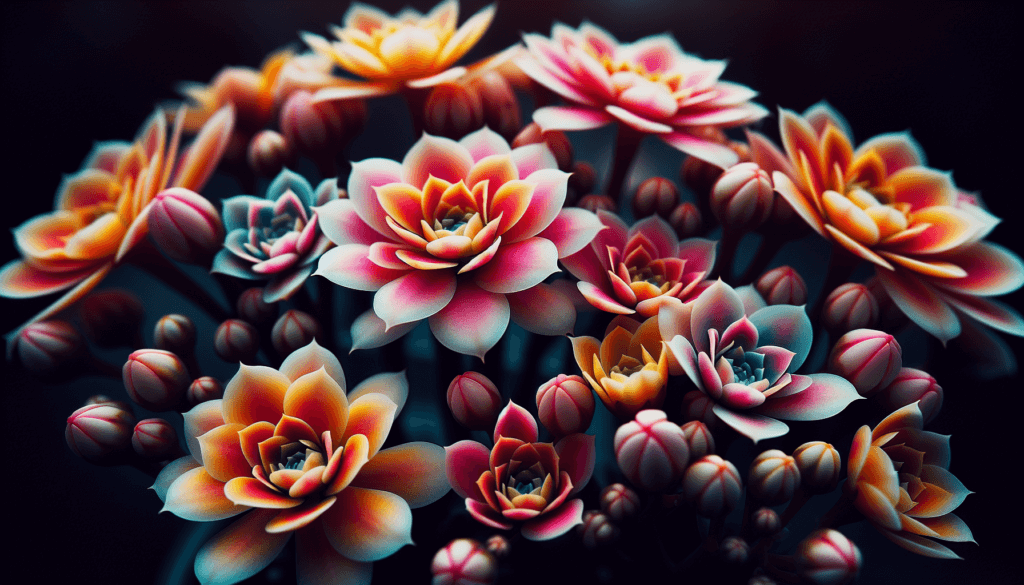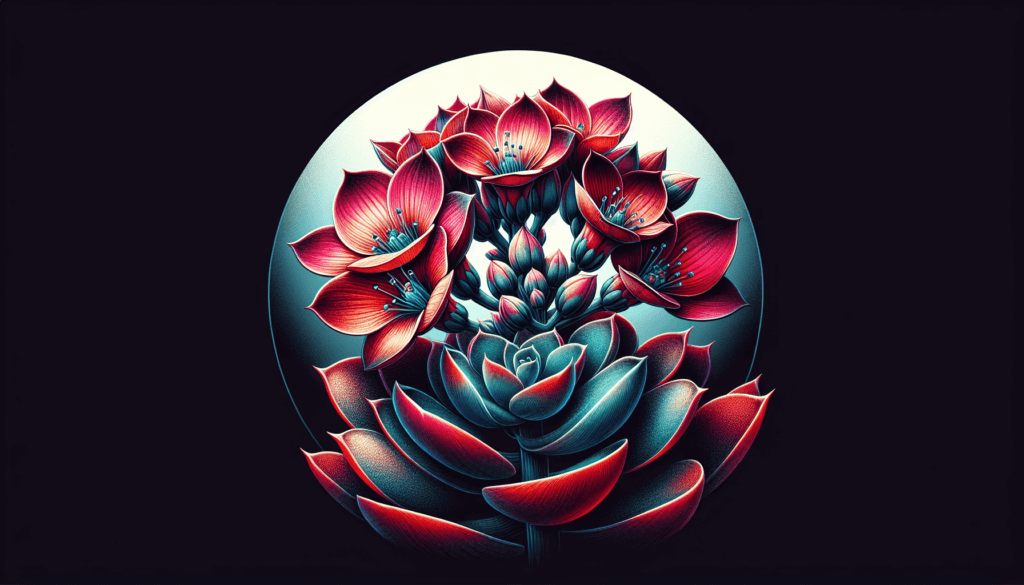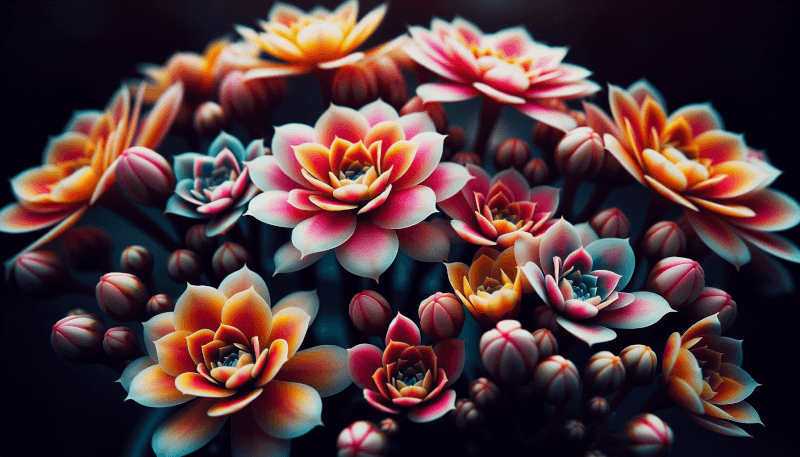If you’re looking to add a splash of vibrant color and natural beauty to your indoor space or garden, look no further than the Kalanchoe plant. With its stunning clusters of flowers in an array of bright hues, this resilient succulent is sure to grab your attention and keep it. But how do you keep this striking plant thriving? Fear not, as this article will guide you through the essential steps of Kalanchoe plant care, ensuring that you can enjoy its beauty year-round. From proper watering techniques to ideal lighting conditions, we’ve got you covered so that you can cultivate the perfect Kalanchoe plant garden.

Choosing the Right Kalanchoe Plant
When it comes to choosing the right kalanchoe plant, there are a few factors to consider. The first is the climate of your location. Kalanchoe plants thrive in warm climates, so if you live in a colder region, you may need to provide extra care and attention to ensure the plant’s survival.
Next, consider the size of the plant. Kalanchoes come in various sizes, from small potted plants to larger ones that can be used as focal points in your garden. Think about the space you have available and choose a size that will fit well and complement your existing plants or home decor.
Lastly, always choose a healthy plant. Look for vibrant, green leaves and sturdy stems. Avoid plants with signs of wilting or discoloration, as these may indicate underlying health issues. It’s important to start with a healthy plant to give it the best chance of thriving under your care.
Light Requirements
Kalanchoes prefer bright, indirect light. They do well in sunny windowsills or places that receive filtered sunlight throughout the day. However, it’s important to avoid exposing them to harsh afternoon sun, as this can cause the leaves to burn.
If you don’t have access to adequate natural light, you can consider using artificial lighting. LED grow lights are a popular option for indoor gardening and can provide the right amount of light for your kalanchoe plants to thrive.
Watering Needs
When it comes to watering your kalanchoe plant, it’s important to find the right balance. Water thoroughly, allowing the water to soak through the soil, and then allow the soil to dry out completely before watering again. Overwatering can lead to root rot, so it’s crucial to avoid keeping the soil consistently moist.
Adjust your watering frequency based on the season. In the warmer months, kalanchoe plants may require more frequent watering, while in the cooler months, they may need less. Pay attention to the moisture level of the soil and adjust accordingly.

Temperature and Humidity
Kalanchoe plants prefer moderate temperatures, ideally ranging between 60°F and 75°F (15°C to 24°C). Avoid exposing them to extreme temperature fluctuations, as this can cause stress to the plant.
In terms of humidity, kalanchoes generally do well in average household humidity levels. However, if you live in a particularly dry climate, you may want to consider increasing the humidity around your plants. You can achieve this by placing a tray filled with water near the plants or using a humidifier.
Potting and Repotting
When it comes to potting your kalanchoe plant, it’s important to use well-draining soil. These plants prefer soil that doesn’t retain excessive moisture, as it can lead to root rot. Look for a potting mix specifically designed for succulents or cacti, as these will provide the right drainage for your kalanchoes.
Choose a pot size that allows for proper root growth. Typically, a pot that is slightly larger than the current one will suffice. Avoid choosing a container that is too large, as this can lead to excessive moisture retention and ultimately harm the plant.
As your kalanchoe plant grows, you may need to repot it to provide enough space for the roots. If you notice the roots becoming overcrowded or protruding from the drainage holes, it’s time to repot. Gently remove the plant from its current pot, shake off excess soil, and place it in a slightly larger pot with fresh potting mix.
Fertilizing
To keep your kalanchoe plant healthy and thriving, it’s important to provide it with the right nutrients. Use a balanced, water-soluble fertilizer specifically formulated for succulents or cacti. Follow the instructions on the package for the recommended dosage.
It’s best to apply the fertilizer during the active growth period, which is typically spring and summer. During the dormant period in fall and winter, reduce or eliminate fertilization as the plant’s growth slows down.
Pruning and Deadheading
Pruning is an essential part of kalanchoe plant care. Removing faded flowers and dead leaves not only keeps the plant looking tidy, but also promotes healthy growth. Use clean and sharp pruning shears to trim off any unsightly or damaged parts of the plant.
Additionally, pruning can help control the size and shape of your kalanchoe. If your plant becomes too leggy or starts to overpower its surroundings, you can trim it back to maintain a more compact and manageable form. However, avoid excessive pruning, as it can weaken the plant.
Pests and Diseases
Like any other plant, kalanchoes can be susceptible to pests and diseases. Keep an eye out for common pests such as mealybugs and aphids. If you notice any infestations, there are natural or chemical methods you can use to treat them. Neem oil or insecticidal soap are effective natural options, while chemical insecticides can also be used if necessary.
Prevention is key when it comes to diseases, and one of the primary causes is overwatering. Avoid excessive moisture in the soil, as it can lead to root rot and other fungal infections. By following proper watering practices and providing adequate airflow around your plants, you can significantly reduce the risk of diseases.
Propagation
Propagating kalanchoe plants can be a rewarding way to grow a new plant from an existing one. One common method of propagation is taking stem or leaf cuttings. Carefully cut a healthy stem or leaf and allow it to callus over for a day or two. Place the cutting in well-draining soil, keeping it lightly moist until roots develop.
Another option for propagation is root cuttings. Gently remove a section of the root from the parent plant and plant it in a separate pot with well-draining soil. Keep the soil lightly moist until new roots grow.
Remember to provide appropriate conditions for rooting, such as bright indirect light and moderate temperatures. With patience and care, you can successfully propagate your own kalanchoe plants.
Common Varieties
There are many beautiful varieties of kalanchoe plants to choose from. One popular variety is Kalanchoe blossfeldiana, which is known for its vibrant and long-lasting flowers. It comes in various colors, including red, pink, orange, and yellow.
Another common variety is Kalanchoe tomentosa, also known as “Panda Plant” or “Chocolate Soldier.” This variety has fuzzy, gray-green leaves with brown markings, giving it a unique and appealing appearance.
Lastly, Kalanchoe daigremontiana, often called the “Mother of Thousands,” is known for its ability to produce numerous new plants along the edges of its leaves. It has thick, paddle-shaped leaves and small clusters of pink or white flowers.
Each variety has its own unique characteristics and care requirements, so be sure to choose the one that suits your preferences and gardening style.
In conclusion, kalanchoe plants are a beautiful addition to any home or garden. By considering the climate, selecting the right size, and choosing a healthy plant, you can set yourself up for success. Providing the proper light, watering, temperature, and potting conditions, as well as practicing regular pruning and pest control, will help your kalanchoe plant thrive. With a little care and attention, you can enjoy the vibrant colors and unique characteristics of these lovely plants for years to come.


